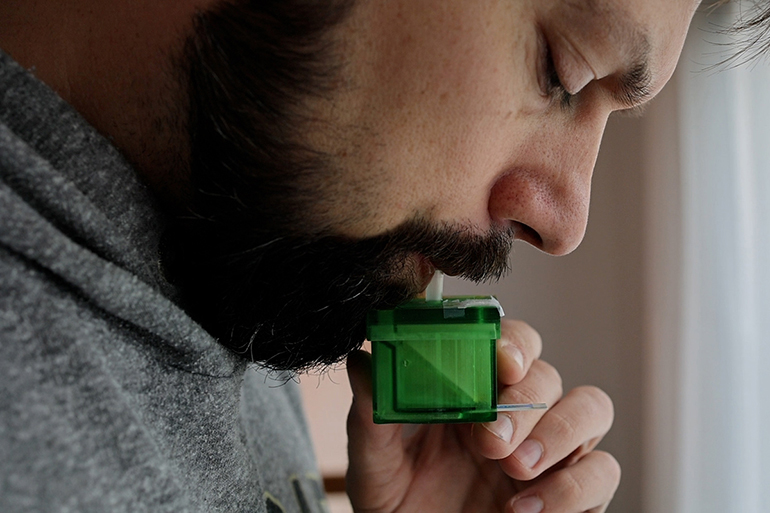Researchers at Washington University School of Medicine have developed a COVID-19 breathalyzer test. The technology requires someone to breathe into it just once or twice, and it can then provide an indication if the person is infected with SARS-CoV-2 in as little as one minute. The device could be very useful fo screening large numbers of people prior to access to an indoor event, for instance, or in community clinics to quickly determine if people are infected. Moreover, the technology could be adapted to detect other viruses, which may be useful for future outbreaks. The system involves blowing into a straw, which directs the breath onto llama-derived nanobodies that specifically bind to the SARS-CoV-2 spike-protein. The nanobodies are bound to an ultrasensitive micro-immunoelectrode biosensor, which can provide a rapid readout if the virus is present.
Thankfully, the COVID-19 pandemic has been declared over. However, if we are to learn the lessons of the pandemic, we need to develop strategies that will assist us with the next one. This could be caused by COVID-19, perhaps through the emergence of a highly aggressive new SARS-CoV-2 variant, or through the emergence of a completely new pathogen which is currently unknown. Rapid and convenient testing will be a key ally, allowing large scale health screens, and this latest technology showcases these features.
“With this test, there are no nasal swabs and no waiting 15 minutes for results, as with home tests,” said Rajan Chakrabarty, a researcher involved in the study. “A person simply blows into a tube in the device, and an electrochemical biosensor detects whether the virus is there. Results are available in about a minute.”
Interestingly, the technology can be modified relatively rapidly to detect other viruses, such as influenza and respiratory syncytial virus (RSV). In fact, the researchers may be able to make a multiplex device that can test for several viruses simultaneously, and report that they should be able to create a biosensor that is specific for completely new viruses, with just a two week lag time.
“It’s a bit like a breathalyzer test that an impaired driver might be given,” said John Cirrito, one of the lead developers of the new technology. “And, for example, if people are in line to enter a hospital, a sports arena or the White House Situation Room, 15-minute nasal swab tests aren’t practical, and PCR tests take even longer. Plus, home tests are about 60% to 70% accurate, and they produce a lot of false negatives. This device will have diagnostic accuracy.”
Study in journal ACS Sensors: Rapid Direct Detection of SARS-CoV-2 Aerosols in Exhaled Breath at the Point of Care
Via: Washington University School of Medicine

